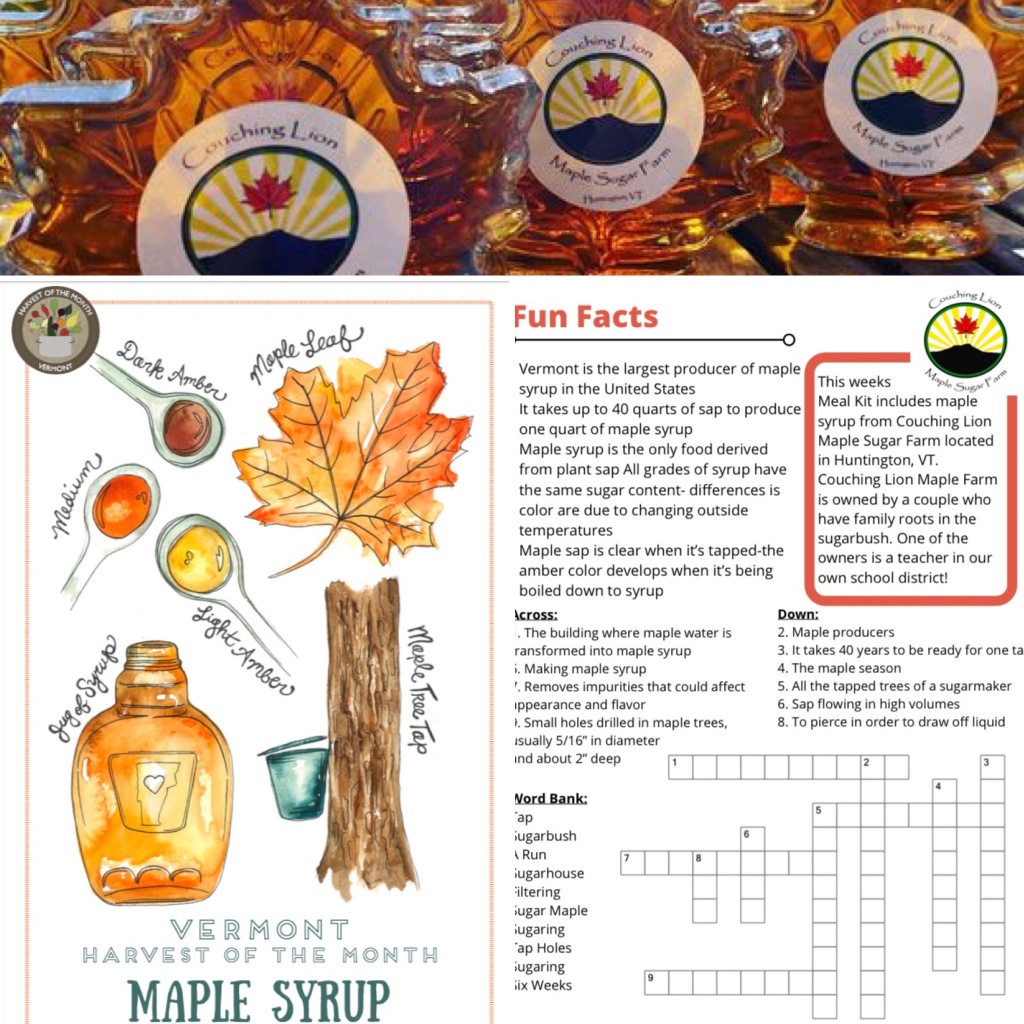Doug Davis, SNS, Food Service Director, and Heather Torrey, MS, RD, SNS, Assistant Director, have been working together at Burlington School Food Project for the past four school years. The district has 4,000 enrolled students with about 50 percent being eligible for free/reduced meals pre-pandemic, when their ADP was 65 percent at both breakfast and lunch. Even though both Heather and Doug were out of state when COVID-19 hit, within 48 hours of school closures they were serving meals using a completely new service model. The forty department employees were divided into pods of 10 and they started serving one bag with one day of meals curbside for approximately 500 students, plus meals for the homeless housed in local hotels (3 meals a day, 7 days per week). Both Doug and Heather admit that things were very tough in the beginning and they were able to make it through because of extraordinary assistance from other school employees, like the paraprofessionals who organized and staffed food distribution points. They also deeply appreciate the support for the Vermont state child nutrition agency and their food distributor Reinhart Foodservice LLC.
What was the biggest challenge that you had to overcome in the past year?
Doug and Heather are quick to acknowledge the operational challenges that were top-of-mind, especially in the first weeks of school closures. Like most other districts, they struggled with staffing issues, supply chain disruptions, and transportation concerns. However they also stress the underlying emotional challenges as well. Even though everyone was focused on the need to feed children, there was anxiety about a deadly disease with lots of unknowns for those who did not have an option to work remotely. Heather admits that she worried about “being the one to take out my whole team.”
What achievement are you the proudest of in the past year?
The successes of the Burlington School Food Project over the past year demonstrate how a team came together, got work done and built a unique model to feed children. After a participation dip in the summer, the Burlington team is now distributing 20,000 quality meals per week in meal kits containing 7 breakfasts, 7 lunches, 7 suppers, and 7 snacks. There is a weekly vegetarian option, often based on foods reflecting the diversity of Burlington (where over 40 languages are spoken in a high school of 1,000 students).
Although there were more unknowns than knowns over the year, Heather and Doug are not surprised about what the team was able to do. The Burlington School Food Project has worked hard to be integrated into the education process of the district and into sustainable agriculture in Vermont. In March 2021, they partnered with the local Couching Lion Maple Farm and distributed a Harvest of the Month maple syrup jug in every meal kit. The farm is owned by a teacher in the district, making more connections between education, local agriculture, and delicious meals for children. Moving forward, Burlington School Food Project plans more direct contact with Vermont farmers and food producers. Since they know that the Meal Box model will continue through September, they have started calling local farmers and food producers with a heads up about the volume the district will need so they can plan their planting and harvest schedule. “Leveraging buying power to support the local economy and provide high quality foods to our families has been — and will continue to be a core focus for our program.”
What innovation have you made that you will continue using in the future?
Rather than a procedure or a food product, the Burlington School Food Project will take a mindset into the future. As Doug Davis said, “I will never look at a problem or situation and think we cannot do that. I now know that there is nothing that we cannot do. We can meet any challenge.
Heather has a slightly different take: “I went back to my dietetics basics with the ADIME model to constantly assess what we are doing and how we can make it better. We started curbside meal service with one model, saw that we were not reaching as many folks as it should, and we switched it up. Now we’re in the M/E phase of our Family Meal Kits and make subtle tweaks each week to better meet the needs of our community.”



